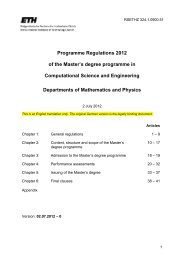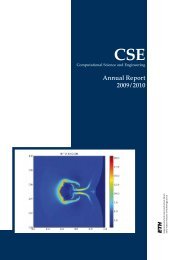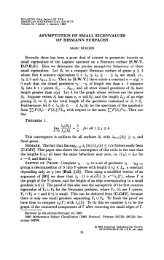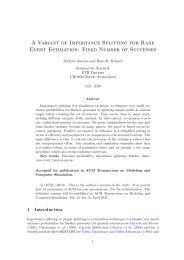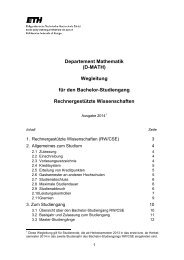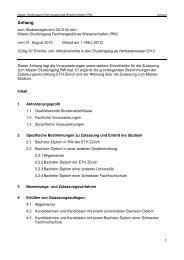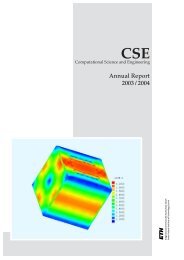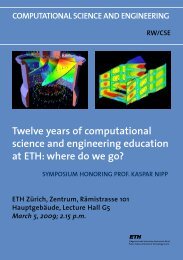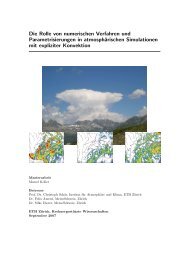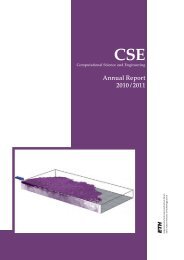A 2D Finite Volume Non-hydrostatic Atmospheric Model ...
A 2D Finite Volume Non-hydrostatic Atmospheric Model ...
A 2D Finite Volume Non-hydrostatic Atmospheric Model ...
Create successful ePaper yourself
Turn your PDF publications into a flip-book with our unique Google optimized e-Paper software.
Contents1 Introduction.......................................................................................................................................11.1 Background................................................................................................................................11.2 Motivation..................................................................................................................................22 Governing equations and the discrete Archimedes' principle............................................................32.1 The inhomogeneous Euler equations.........................................................................................32.2 The integral form of the inhomogeneous Euler equations.........................................................42.3 <strong>Finite</strong> volume method................................................................................................................42.4 Discrete Archimedes' principle..................................................................................................53 Spatial discretization..........................................................................................................................73.1 Calculation of the numerical flux..............................................................................................73.2 Reconstructing the variables at the cell interfaces.....................................................................83.3 Computing the gradients............................................................................................................93.4 Calculation of the source term...................................................................................................93.5 Reconstruction of the local <strong>hydrostatic</strong> background state.......................................................104 Numerical integration and further developments............................................................................114.1 The 2nd order leapfrog scheme................................................................................................114.2 Divergence damping................................................................................................................134.3 Computational mixing ............................................................................................................144.4 Diffusion..................................................................................................................................154.5 Rayleigh sponge layer..............................................................................................................154.6 Stability....................................................................................................................................155 Boundary conditions and grids........................................................................................................175.1 Uniform Cartesian grid using cut cells....................................................................................185.2 Simplifications.........................................................................................................................205.3 Terrain-following grid.............................................................................................................215.4 Hybrid coordinates...................................................................................................................216 Numerical results.............................................................................................................................236.1 Setup........................................................................................................................................236.2 Performance improvement.......................................................................................................246.3 Linear, non-<strong>hydrostatic</strong> flow....................................................................................................266.3.1 Grid comparison...............................................................................................................266.3.2 Impact of the corrected divergence damping...................................................................286.3.3 Influence of the Rayleigh sponge layer............................................................................286.3.4 The effects of computational mixing...............................................................................306.4 Linear <strong>hydrostatic</strong> flow............................................................................................................306.5 Flow over a Schär hill .............................................................................................................336.6 Thermal bubble........................................................................................................................356.7 Atmosphere at rest...................................................................................................................377 Conclusion and outlook...................................................................................................................397.1 Acknowledgments...................................................................................................................39i





